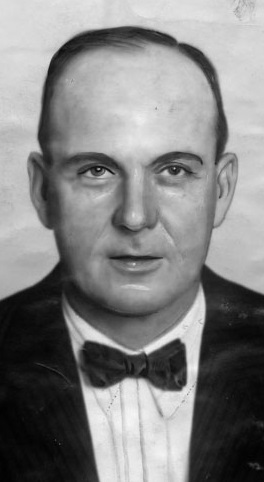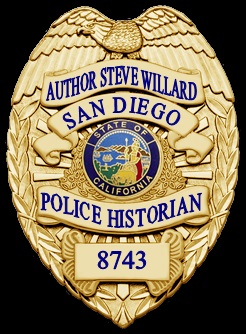



Using the information from his cafeteria customers, Clinton knew of almost all of the gambling houses and brothels in town. He also knew they made little efforts to hide their activities which meant they were most likely being protected by the LAPD and LA City Hall - all while the LA Times turned a blind eye. Clinton was not shy in his criticism of the activities and forwarded the information to the entire grand jury. They responded by doing nothing. Clinton later learned nine of the grand jury members themselves had financial stakes in the illegal activities.
By now Clinton had drawn the attention of LA Mayor Frank Shaw; a man who history will remember as one of the most corrupt men to even hold public office. Suddenly Clinton's cafe was being besieged by city health inspectors "just doing their jobs." Clinton's city tax bill was increased by $6700 overnight. Food poisoning complaints started rolling in at unprecedented levels. People, or stuntmen as Don Clinton called them, began filing claims of falling down the stairs. In an effort to drive out the white customers, busses full of blacks from the south side were brought in for the free meals. Clinton didn't blink. He welcomed the new patrons and found many of them were most eager to pay and were good for business.
Meanwhile, Clinton continued to beat the drum about corruption to anyone who would listen.
Then things got dangerous. Shortly before midnight on October 28, 1937, someone slipped a bomb in the kitchen of the cafe. No one was hurt and the Times labeled the entire thing a publicity stunt, but a witness to the bombing described the getaway car as one belonging to the LAPD spy squad.
As this was happening, Harry Raymond had been quietly working behind the scenes for the past two years investigating it all.
Funded by CIVIC, Citizens Investigating Vice Corruption, an organization Clinton founded, the ex chief was well on his way to amassing enough evidence to send people to prison.
On January 14, 1938, shortly before 10 a.m. Raymond went out to his locked garage in the Boyle Heights section of Los Angeles. His wife needed to go to the market. Normally, she went out to the car with him, but on this particular day, she went over to a neighbor's house first for her husband to pick her up there. It was a good thing, too, because when Raymond stepped on the gas, a bomb went off under the hood that rocked the entire neighborhood.
Amazingly, Raymond survived the blast. He was rushed to Georgia Street Receiving Hospital where he received over 100 stitches and was treated for multiple fractures and two chest punctures. LAPD investigators tried to pin the blast on the mob but CIVIC suspected the LAPD spy squad planted the bomb.
Harry Raymond spent the next several months undergoing multiple surgeries to remove more than 150 pieces of shrapnel, all the while with a pistol under his blanket.
Within the walls of LAPD headquarters LAPD Captain Earl Kynette was heard to say "that's too bad. Next time we'll do a better job."
If the blast was meant to scare Clinton and Raymond it backfired. The attempted assignation only strengthened their resolve. Clifford Clinton began a radio show from his home that reached 300,000 listeners. There was only one goal of the four day per week show - the recall of Mayor Frank Shaw.
The Mayor responded by sending out his own men, disguised as recall petition signature gatherers. Anything they collected was destroyed. Meanwhile, the LAPD, under the direction of Chief James Edgar Davis, began a campaign to label Clinton as a power hungry communist who would do anything to place himself in power.
Meanwhile, public pressure of the Raymond bombing forced the authorities to act. An independent investigation was launched and resulted in the indictments of Captain Earl Kynette and two members of his squad.
At the trial the prosecution presented evidence showing the LAPD had staked out Raymond’s house and tapped his phones for months prior to the bombing. Harry Raymond also testified. Captain Kynette invoked his 5th amendment privilege not to testify and instead sat reading a copy of the US Constitution.
One witness that couldn’t refuse to testify was LAPD Chief James Edgar Davis. Davis denied any LAPD involvement in the bombing of Raymond’s car but he wasn’t exactly believable. Trial judge Fletcher Bowron called Chief Davis’ testimony, “A debris of words.”
After a short deliberation, the jury returned guilty verdicts against Captain Kynette for the bombing and his lieutenant for being an accomplice. A sergeant acquitted of all charges. Judge Bowron sentenced Kynette to two years to life in San Quentin but the wrecking ball didn’t stop there. Seven members of the intelligence unit who earlier refused to testify were ordered suspended by the LA Civil Service Commission. As the scandal continued to grow, a recall vote was taken and, on September 16, 1938 his replacement was Judge Fletcher Bowron.
With the reigns of power now firmly in his hands, the judge quickly fired Chief James Edgar Davis and 23 of LAPD's top brass. Their replacements were "men of more solid reputations."
As the 1930's drew to a close LAPD Arthur Hommann had one last issue left over from the Davis regime; more than 7,000 Los Angeles Police Department "juice badges" in the hands of the public at large. Given to financial supporters of the former chief, and often marked with "Lieutenant, Los Angeles Detective" the badges made real LAPD badges almost worthless.
Chief Hommann issued his officers a new badge, a silver oval with the centerpiece of LA city hall. Called the "Series 6", the new shield would now have the tightest controls in law enforcement. The LAPD academy class of 1940 were the first officers to get the new badge. Even to this day the only way to legally obtain a Series 6 badge is to complete the LAPD academy. For officers who "lose" their Series 6, the LAPD has two internal affairs sergeants who do nothing but track the badges down.
The effects of the bombing must have taken a terrible toll on Harry Raymond. In 1957 he was arrested in downtown San Diego for being a drunk vagrant. Booked into jail like a common derelict, the officers apparently had no idea of who he was or the significant part of history he was involved in.
BRINGING DOWN CITY HALL
With San Diego in his rear view mirror, former SDPD Chief of Police Harry Raymond returned to Los Angeles where he met up with Clifford Clinton, the owner of a downtown cafe. Clinton was a local celebrity in his own right. In the height of the America's worst economic downturn, the Great Depression, he opened a cafe with one rule - pay what you wish. To the hungry, homeless and destitute, he was almost a folk hero. While the tactic may have seen foolhardy on paper - some 10,000 people ate there in the first three months of 1931 and paid nothing - many others gave a lot more and Clinton was rapidly becoming one of LA's wealthiest and most powerful businessmen. Clinton openly spoke of wanting to end hunger by taking his "Pay what you Wish" concept across the United States.
Because of his success - mainly chatty cafe customers who told him anything and everything about what was happening around town - Clinton was able to get a no hold barred look at the City of the Angels and he made it clear he didn't like what he saw.
Then came a shot to get into the inside circle; LA County Supervisor John Anson Ford asked Clinton to use his knowledge of the food industry to help the problem plagued food service program at County General Hospital. Clinton eagerly accepted and quickly uncovered rampant corruption. Materials were missing. Food and supplies were being provided by vendors at ten times their value, all with the full knowledge of the hospital administrators. Clinton's report led to the hospital director being fired and a seat for himself as chairman of the LA County Grand Jury.
HARRY RAYMOND

The CRIME FILES
